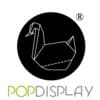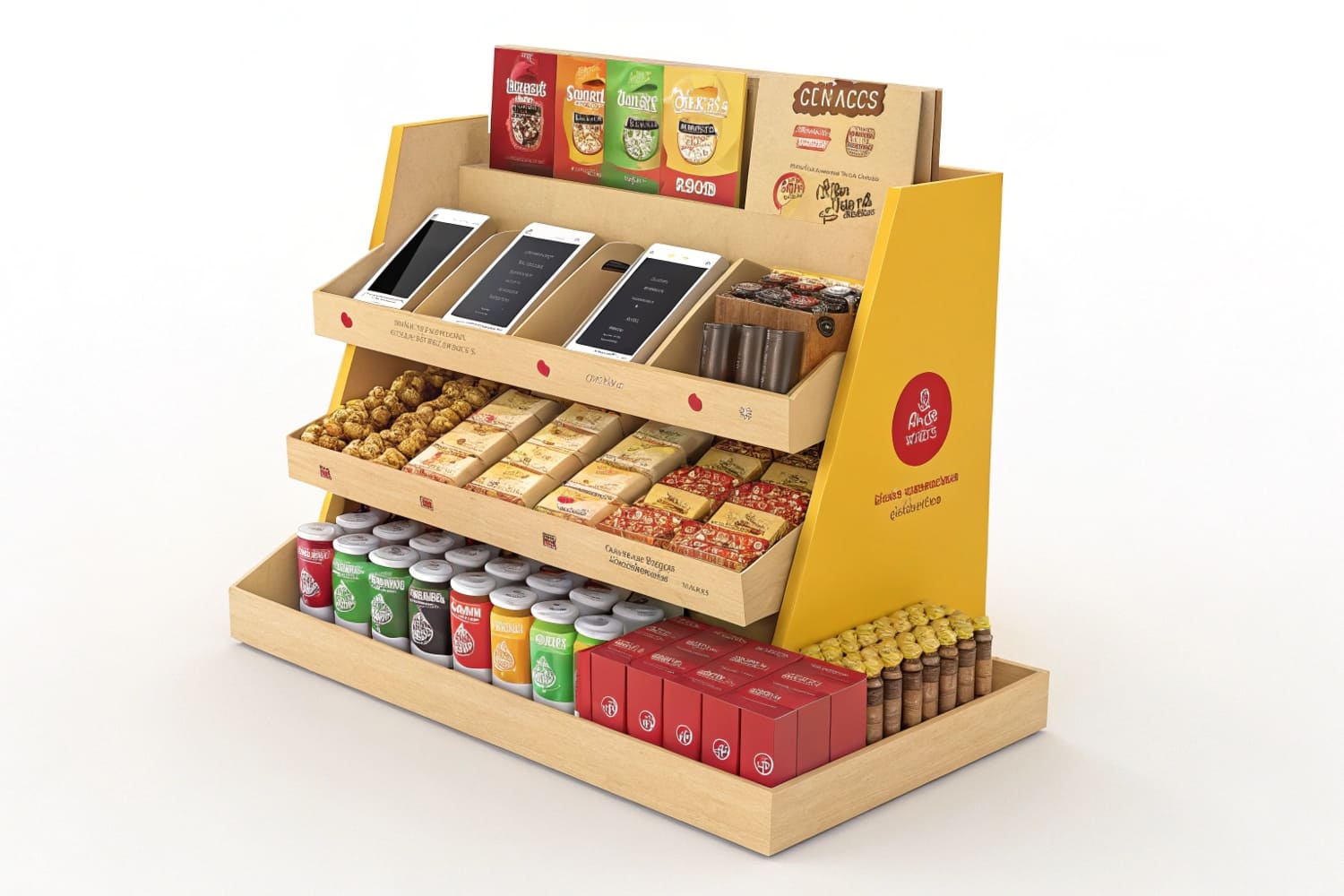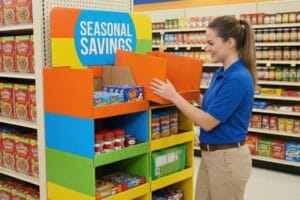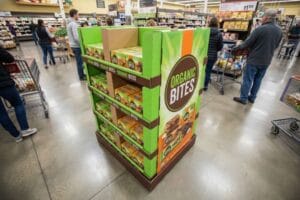Your checkout counter is prime space. Shoppers pause here. They decide fast. I design countertop shelving that wins these moments and meets budgets, deadlines, and strict brand rules.
We offer PDQ trays, tiered step shelves, gravity-feed counters, pegboard hook units, brochure holders, sample tester stands, spinner racks, and hybrid cardboard-acrylic displays. All are custom sized, printed to brand, flat-pack, tool-free, load-tested, and ready for fast rollouts across retail chains.

I will keep this simple and useful. I will show names, types, and use cases. I will also share how I handle deadlines, weight, and branding so your team can order with confidence.
What are shelves called in retail stores?
Retail slang can confuse teams fast. One buyer says “fixture.” A store lead says “bay.” A designer writes “PDQ.” I keep a clean glossary on every drawing, so no one guesses.
In retail, people often say fixtures or bays for shelf units. On counters, common names include PDQ trays, countertop displays, step shelves, gravity-feed trays, pegboard counter racks, and brochure holders. Clear names prevent errors in design, quotes, and store setup.

Common terms and what they mean
I see teams mix terms across regions. North America is steady on PDQ1 for small counter trays. APAC grows fast and borrows terms from export brands. Europe leans on “unit” and “stand” and asks more about recyclability2. When I onboard a project, I lock terms on the first call. I put each term beside a simple photo icon in the spec. This short step avoids wrong hooks, wrong footprints, and missed planogram notes. In one hunting project, the engineer said “counter shipper,” the buyer said “PDQ,” and the store called it an “impulse tray.” We aligned names, fixed drawings, and hit launch week with no back-and-forth.
| Term | What people mean | Typical place | Notes |
|---|---|---|---|
| Fixture | Any display hardware | Storewide | A broad word; confirm type |
| Bay | Section of a gondola | Aisles | Often measured in feet or millimeters |
| PDQ Tray3 | Pre-packed counter tray | Checkout, service desk | Ships filled or flat |
| Step Shelf | Tiered riser | Counter | Great for small packs |
| Gravity-Feed4 | Angled tray with baffle | Counter, front end | Keeps facings full |
| Pegboard | Panel with hooks | Counter or wall | Add hooks or small shelves |
| Literature Holder | Brochure/leaflet stand | Counter | Pairs with coupons or guides |
What are the different types of retail fixtures?
Teams plan fixtures by mission, not by material first. I ask what must move: units, revenue, or awareness. Then I map the right family and the right shelf style.
Retail fixtures group into floor units, wall systems, counter displays, pallet/club solutions, and sign systems. You pick by product weight, footprint, shopper flow, setup speed, and budget. Counter shelving handles impulse adds and new item trials.

Fixture families at a glance
Most product lines need a mix. Floor displays5 drive discovery. Wall systems carry depth. Counters win impulse adds. Pallet solutions win speed in club stores. Signage ties the story together. I design cardboard for speed, weight, and print impact, and I add metal hooks or small acrylic windows when needed. For crossbow accessories, I used a compact step shelf at checkout to highlight broadheads. For protein snacks, I used gravity-feed counters6 to keep facings tight between rushes. I keep assembly to minutes, not hours, because front-end staff switch tasks fast.
| Fixture | Best for | Pros | Watchouts |
|---|---|---|---|
| Floor Display7 | New lines, bundles | Big canvas, flexible | Space limits in narrow aisles |
| Endcap/Sidekick8 | Promotions | High traffic | Retailer rules vary |
| Wall (Peg/Slat/Grid) | Depth assortment | Strong load | Needs hardware |
| Counter Display (PDQ/Step/Feed) | Impulse, small packs | Fast setup, low cost | Limited SKU depth |
| Pallet/Club | Bulk packs | Speed, easy in/out | Footprint is fixed |
| Sign/Topper | Wayfinding, story | Light, low cost | Needs good copy and color |
What is shelving in retail?
Shelving is more than boards and brackets. It is a system that holds stock, keeps it seen, and makes hands move fast. Good shelving saves time every day.
Retail shelving is the system that supports products, shows brands, and guides choice. It includes structure, graphics, pricing rails, and tested parts that hold weight and survive transport. Good shelving balances strength, print, and speed.

Parts that make a shelf work
I design in layers. The structure carries load. The print communicates. The edges protect. The tray angle9 keeps product forward. The stop bar controls flow. The header tells the story. On cardboard, I spec flute, liners, wrap, and coatings to match use time and humidity. I test a sample, then a transit pack. I mark fold lines and number tabs, so setup is clear. When a team is busy, clear marks10 save minutes and reduce damage. I add UPC windows and price rails where the retailer asks. I build cable paths or tag holders if we add digital later.
| Part | Role | Options | My standard |
|---|---|---|---|
| Structure | Carry load | Corrugated, hybrid | Single-wall E/B flute, or double if heavy |
| Shelf Face | Branding | Direct print, label | High-res direct print11 |
| Forward System | Keep facings full | Gravity angle, spring | Gravity for low cost |
| Edge/Stop | Hold packs | Die-cut lips | Rounded edges for safety |
| Price/UPC | Scan visibility | Rail, label window | Rail if retailer uses tags |
| Coating | Life extension | AQ, water-resist | Water-resist on front edges |
Why retail shelves are so important?
Shelf work decides if a shopper sees your pack. It decides if staff can refill fast. It decides if boxes arrive safe and turn into sales, not returns.
Shelves matter because they drive visibility, order, and speed. Strong, well-printed shelves lift sales, protect stock, reduce waste, and keep changeovers quick. Small gains at checkout repeat all day and add up.

How shelves change results
I measure wins in simple ways. If shoppers see the top three claims12 at eye or hand level, they try more. If facings stay full, staff spend less time fixing gaps. If the tray loads fast, teams keep the program alive during rush hours. In a seasonal hunting launch13, my counter step shelf kept broadhead packs upright and safe from scuffs. The team told me setup felt easy on day one. Returns stayed low. Reorder came in before the season peak. These quiet wins repeat. Good shelves do not shout. They work, hour by hour, until the event ends or the season flips.
| Goal | Shelf move | Result type |
|---|---|---|
| Visibility | Taller header, clean claim stack | Faster pick14 |
| Order | Gravity angle, stop lips | Fewer gaps15 |
| Speed | Numbered tabs, pre-glued seams | Short setup |
| Protection | Edge wrap, round corners | Less damage |
| Story | Color block, icon guide | Clear choice |
What are smart shelves in retail?
Many teams ask for “smart,” but budgets vary. I build “smart-ready” first, then add devices as needed, so you can scale without risk.
Smart shelves add sensors, tags, and links to track stock and trigger content. I offer smart-ready cardboard with device pockets, cable paths, tag holders, and QR/NFC. You can start simple and add hardware when tests prove value.

Levels of smart you can choose
I like a ladder. Step one uses printed QR and NFC. Shoppers scan and see guides, fit charts, or safety tips. Staff scan and see setup videos. Step two adds battery E-ink price tags16 or simple count sensors. These reduce label swaps and flag low stock. Step three adds load cells or camera modules. These cost more and need power. For seasonal trials, step one is often enough. For chain rollouts, step two can pay back in labor hours. I route cable paths and make hidden pockets, so the shelf stays clean. I also plan recycling. Devices remove in seconds. Cardboard goes to the paper stream. This keeps sustainability strong17, which matters in the U.S., Europe, and fast-growing APAC markets that ask for greener runs.
| Tech | Purpose | Cost level | How I integrate |
|---|---|---|---|
| QR/NFC18 | Content, setup help | Low | Printed code, small NFC tag |
| E-ink Tags19 | Price updates | Medium | Rail cutouts, clip points |
| Count Sensor | Facings alert | Medium | Hidden pocket, wire path |
| Load Cell | True unit weight | High | Base cavity, stiffeners |
| Camera | Planogram check | High | Header pocket, privacy shield |
Conclusion
Strong counter shelving is clear, fast, and branded. Start with PDQ trays, steps, and feeds. Add smart-ready details. Test small, learn fast, and scale with confidence.
Understanding PDQ can enhance your knowledge of retail display strategies and improve your project outcomes. ↩
Exploring recyclability in packaging can help you make sustainable choices and meet consumer demands. ↩
Explore this link to understand how PDQ Trays enhance checkout efficiency and product visibility. ↩
Learn about Gravity-Feed displays to see how they optimize product placement and keep shelves stocked. ↩
Explore how floor displays can enhance product visibility and drive customer engagement in retail settings. ↩
Learn how gravity-feed counters can optimize product placement and increase sales efficiency in stores. ↩
Explore this link to understand how Floor Displays can enhance product visibility and sales. ↩
Discover insights on how Endcap/Sidekick displays can drive high traffic and boost promotional success. ↩
Understanding tray angle can enhance product visibility and accessibility, crucial for effective shelf design. ↩
Exploring the role of clear marks can reveal strategies to save time and reduce errors during shelf assembly. ↩
Explore this link to understand how high-res direct print enhances branding and visual appeal in packaging. ↩
Understanding the top three claims can enhance your product placement strategy, leading to increased sales and customer engagement. ↩
Exploring effective strategies for seasonal launches can help you maximize sales and optimize inventory management during peak seasons. ↩
Discover how optimizing header height and claim stacks can significantly enhance picking speed in your warehouse. ↩
Learn how implementing gravity angles and stop lips can improve order accuracy and efficiency in your storage solutions. ↩
Explore how battery E-ink price tags can enhance retail efficiency and customer experience. ↩
Learn effective strategies for enhancing sustainability in retail, crucial for modern consumers. ↩
Explore how QR/NFC can enhance customer engagement and streamline operations in retail. ↩
Learn how E-ink tags can optimize pricing updates and improve customer experience. ↩




